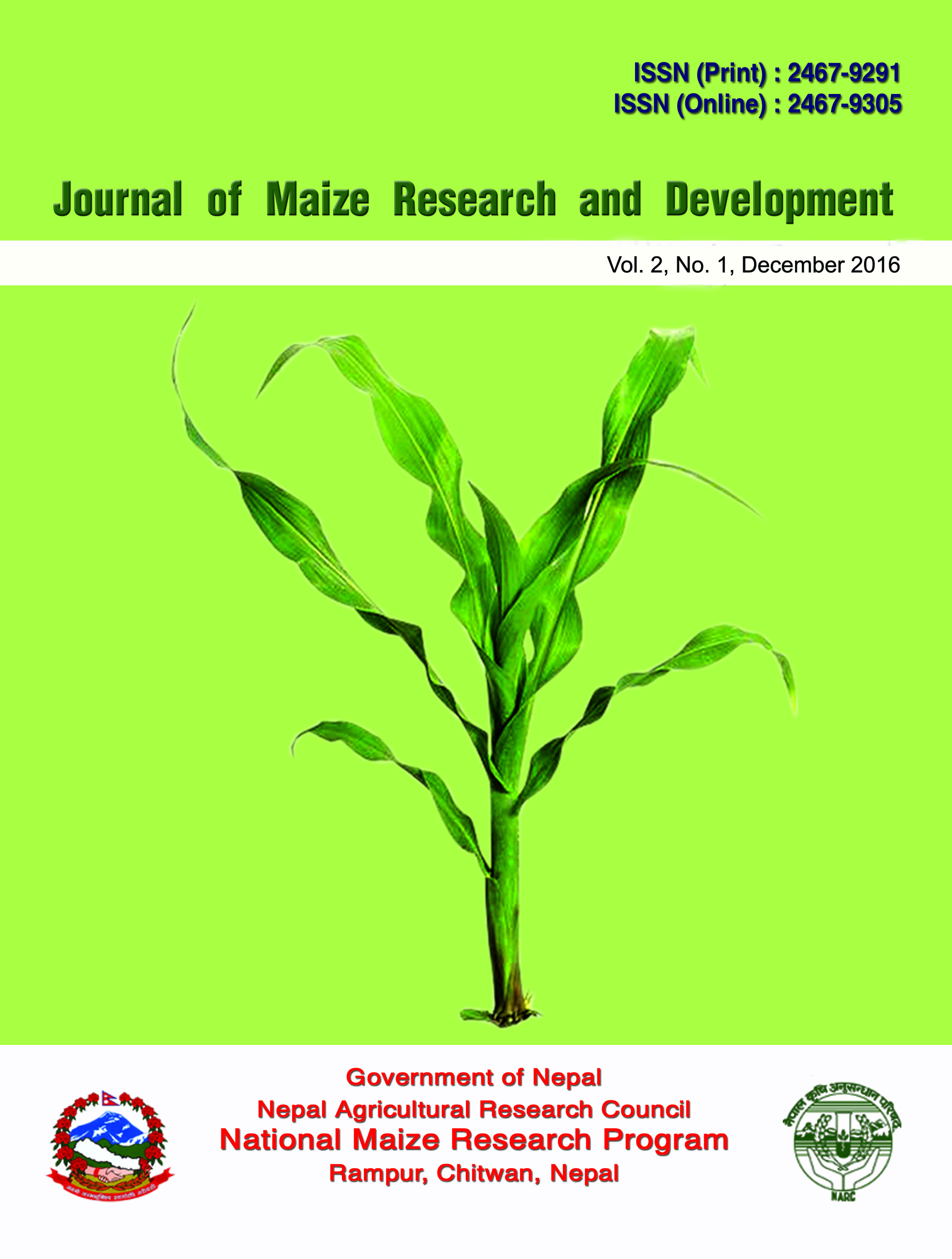Performance evaluation of commercial maize hybrids across diverse Terai environments during the winter season in Nepal
DOI:
https://doi.org/10.3126/jmrd.v2i1.16210Keywords:
Genotype grouping, G x E interaction (GEI), grain yield, hybrid maize, superiority measureAbstract
The hybrid maize cultivars of multinational seed companies are gradually being popular among the farmers in Nepal. This paper reports on research finding of 117 maize hybrids of 20 seed companies assessed for grain yield and other traits at three sites in winter season of 2011 and 2012. The objective of the study was to identify superior maize hybrids suitable for winter time planting in eastern, central and inner Terai of Nepal. Across site analysis of variance revealed that highly significant effect of genotype and genotype × environment interaction (GEI) on grain yield of commercial hybrids. Overall, 47 genotypes of 16 seed companies identified as high yielding and stable based on superiority measures. The statistical analysis ranked topmost three genotypes among tested hybrids as P3856 (10515 kg ha-1), Bisco prince (8763 kg ha-1) as well as Shaktiman (8654 kg ha-1) in the first year; and 3022 (8378 kg ha-1), Kirtiman manik (8323 kg ha-1) as well as Top class (7996 kg ha-1) in the second year. It can be concluded that stable and good performing hybrids identified as potential commercial hybrids for general cultivation on similar environments in Nepal.




